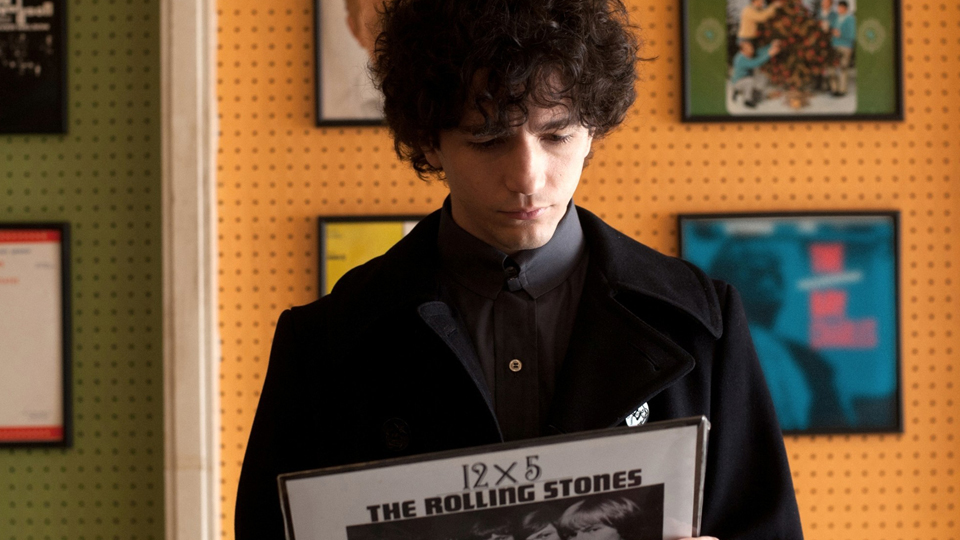Rock music has been Hollywood film fodder for years now. From biopics about some of the biggest rock bands in history (The Doors, Control) to stories of fictional musicians hitting it big (Almost Famous, Walk Hard), Hollywood can’t seem to resist fetishizing fame and the excess often associated with rock ’n’ roll. But what happens to the bands that never get their big break? For every band that ends up on the cover of Rolling Stone, thousands never make it out of the garage. This is the problem that David Chase’s new film, Not Fade Away, explores.
The film opens with a black-and-white dramatization of a young Mick Jagger and Keith Richards meeting for the first time. But as the colour palette kicks in and we meet our motley cast of characters, it quickly becomes apparent that the film isn’t going to offer such a neat rags-to-riches story. In place of the fiery Jagger, our protagonist is Douglas (John Magaro), a nebbish Bob Dylan lookalike. When he and a few friends form a rock band in 1960s small-town New Jersey, Douglas is immediately relegated to the drum kit. The band’s frontman is the charismatic Eugene (Boardwalk Empire’s Jack Huston), whose self-aggrandizement even leads to the band initially being named after him. It seems like Douglas is doomed to anonymity.
But after a humorous mishap while getting high at a house party the band is supposed to perform at, Eugene is unable to play the show. This is Douglas’ chance to step up to microphone, and—much to Eugene’s dismay—he’s a hit. From here, Not Fade Away follows the issues of jealousy, rivalries, family, and romantic relationships that all threaten to permanently derail the band. It doesn’t go in any really unexpected directions, but Not Fade Away plays its rock music tropes well, all while keeping the story grounded in a small-town setting.
Not Fade Away is Chase’s cinematic directorial debut; he is best known for having created The Sopranos. In some ways, it’s easy to tell that this is a debut film. Its low-key story is mostly effective and the characters are relatable, but there’s something a bit lacking in the film’s drive. The story is based on Chase’s own youth, and at times it feels more like a love letter to the ’60s than a true-to-life coming-of-age tale.
The film is also obsessed with timelines. The narrative only spans two or three years, but it seems like with each new scene, Chase takes a moment to establish what season it is and how the scene relates temporally to the previous one. This may be Chase’s way of depicting the youthful tendency to mark the passing of time by summers, Christmases, and school terms, but it seems more suited to television, where each episode can be set a few weeks or months after the last without the need to play catch-up to get the viewer on the right page. Unfortunately, working that structure into a film often causes Not Fade Away to feel disjointed.
Music fans will probably find a lot to like in the film’s soundtrack, though. Steven Van Zandt (who appeared on The Sopranos and is also part of Bruce Springsteen’s E Street Band) is the executive producer and music supervisor, and he does a fantastic job with the song selection. From the Kinks to the Rolling Stones, his musical choices evoke the time period. As well, Van Zandt wrote a catchy original song for the movie, “St. Valentine’s Day Massacre”, which the band performs.
Not Fade Away wins by bringing genuine heart to universally relatable moments. For example, when Douglas awkwardly attempts to make small talk at a party with his high school crush, Grace (Bella Heathcote), it feels believable. The rise and fall of the band may begin and end in their hometown, but Chase has a knack for depicting small-scale drama in a way that is potent enough to keep the viewer engaged. It’s a slight entry that relies a little too heavily on cliché, but in the end, Not Fade Away largely rings true. MMM



